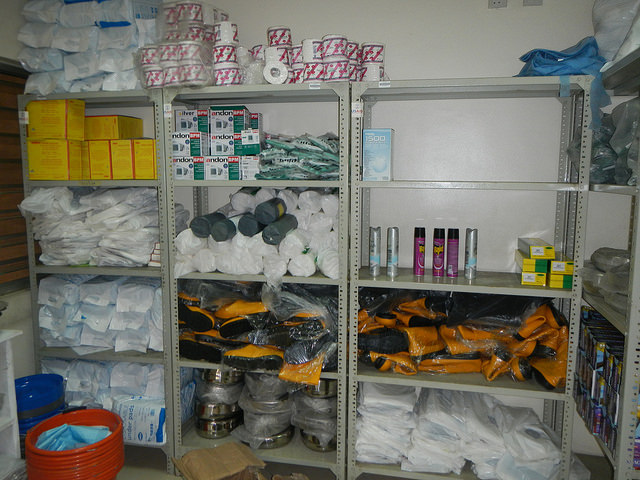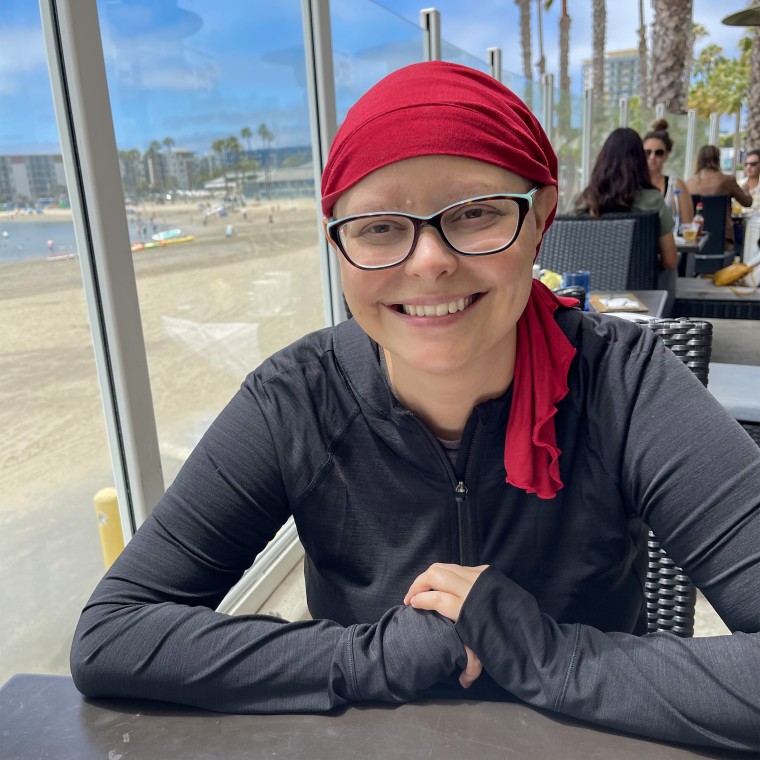New Ebola outbreak in DR Congo suspected of causing 15 deaths – CNN

Report on the Ebola Virus Disease Outbreak in the Democratic Republic of Congo
Executive Summary
A new outbreak of Ebola Virus Disease (EVD) has been reported in the Democratic Republic of Congo (DRC), marking the 16th such event in the nation. The outbreak, centered in the Kasai province, presents a significant public health challenge and directly impacts the progress toward achieving Sustainable Development Goal 3 (SDG 3): Good Health and Well-being. Initial data indicates a high fatality rate, necessitating an urgent and coordinated response to protect human life and strengthen health systems in line with global development targets.
Outbreak Details and Impact on Sustainable Development Goals
Epidemiological Data
The Ministry of Health has released a provisional report detailing the scale of the outbreak. The data underscores the threat to public health and the urgent need to meet SDG Target 3.3, which aims to end epidemics of communicable diseases.
- Suspected Cases: 28
- Suspected Deaths: 15
- Fatality Rate: Approximately 53.6%
- Affected Locations: Boulapé and Mweka localities in Kasai province.
- Confirmed Case: A 34-year-old pregnant woman, highlighting the vulnerability of specific demographic groups and the importance of inclusive healthcare as outlined in SDG 5 (Gender Equality).
- Healthcare Worker Infections: Four health workers are among the suspected cases, emphasizing the critical need for robust infection prevention and control measures to protect frontline responders.
Symptoms and Transmission
The clinical presentation of the cases aligns with EVD, further challenging the region’s health infrastructure. The high contagion level of the virus, transmitted through bodily fluids, requires immediate public health interventions to halt its spread.
- Fever
- Vomiting
- Diarrhea
- Heavy Bleeding
Coordinated Response and Partnership for the Goals (SDG 17)
Immediate Actions and Interventions
A collaborative response, exemplifying SDG 17 (Partnerships for the Goals), has been initiated between the DRC government and the World Health Organization (WHO). This partnership is crucial for mounting an effective defense against the outbreak.
- Expert Deployment: WHO experts and the DRC’s Rapid Response Team have been dispatched to Kasai province.
- Logistical Support: Essential supplies are being delivered, including personal protective equipment (PPE), mobile laboratory equipment, and medical materials.
- Capacity Strengthening: Efforts are focused on reinforcing disease surveillance, treatment protocols, and infection prevention and control in local health facilities, directly contributing to SDG Target 3.d (strengthening capacity for early warning and management of health risks).
Availability of Medical Countermeasures
The DRC’s preparedness includes access to critical medical tools, which is fundamental to achieving SDG Target 3.8 (universal access to essential medicines and vaccines).
- A national stockpile of effective EVD treatments is available.
- The Ervebo Ebola vaccine is also available for deployment to control the spread of the virus.
Dr. Mohamed Janabi, WHO Regional Director for Africa, affirmed the commitment to the response, stating, “We’re acting with determination to rapidly halt the spread of the virus and protect communities.” This proactive stance is essential for mitigating the outbreak’s impact and safeguarding progress toward the Sustainable Development Goals.
Analysis of Sustainable Development Goals in the Article
1. Which SDGs are addressed or connected to the issues highlighted in the article?
- SDG 3: Good Health and Well-being: This is the most prominent SDG addressed in the article. The entire text focuses on a public health crisis—an Ebola outbreak in the Democratic Republic of Congo. It discusses the disease’s spread, fatality rate, and the response measures being taken to protect the population’s health.
- SDG 17: Partnerships for the Goals: The article highlights the collaboration between a national government and an international organization to tackle the health crisis. The World Health Organization (WHO) is working with Congo’s Rapid Response Team, demonstrating a partnership to mobilize resources and expertise to achieve a common health goal.
2. What specific targets under those SDGs can be identified based on the article’s content?
-
Target 3.3: By 2030, end the epidemics of AIDS, tuberculosis, malaria and neglected tropical diseases and combat hepatitis, water-borne diseases and other communicable diseases.
The article directly addresses this target by reporting on an outbreak of Ebola, which is a severe communicable disease. The efforts described, such as disease surveillance and treatment, are aimed at halting the spread of this epidemic. The article states, “We’re acting with determination to rapidly halt the spread of the virus and protect communities,” which aligns perfectly with the goal of ending epidemics. -
Target 3.d: Strengthen the capacity of all countries, in particular developing countries, for early warning, risk reduction and management of national and global health risks.
The response to the Ebola outbreak illustrates this target in action. The article mentions that the WHO dispatched experts to “strengthen disease surveillance, treatment and infection prevention and control in health facilities.” This is a direct effort to enhance the country’s capacity to manage a significant health risk. The provision of “mobile laboratory equipment and medical supplies” further supports the strengthening of local health infrastructure to manage the crisis. -
Target 17.16: Enhance the global partnership for sustainable development, complemented by multi-stakeholder partnerships that mobilize and share knowledge, expertise, technology and financial resources.
This target is demonstrated by the international cooperation mentioned in the article. The World Health Organization, a global entity, is providing critical support to the Democratic Republic of Congo. The article notes that the WHO “dispatched its experts alongside Congo’s Rapid Response Team” and is “delivering supplies including personal protective equipment, mobile laboratory equipment and medical supplies.” This is a clear example of sharing expertise and resources to support a developing country in achieving a sustainable development goal (in this case, health and well-being).
3. Are there any indicators mentioned or implied in the article that can be used to measure progress towards the identified targets?
- Indicator for Target 3.3 (Incidence of communicable diseases): The article provides specific numbers that can be used as indicators of the disease’s incidence. It states there are “28 suspected cases” of Ebola. Tracking the number of new infections over time is a direct way to measure progress in ending the epidemic.
- Indicator for Target 3.d (Health risk management and mortality rate): The article provides data points that are crucial for measuring the management of health risks. It mentions “15 deaths” and a “fatality rate, estimated at 53.6%.” A reduction in the case fatality rate would indicate an improvement in the country’s capacity to manage the health emergency, which is a core component of Indicator 3.d.1 (International Health Regulations (IHR) capacity and health emergency preparedness). The article also notes that “four health care workers” were among the suspected cases, which is another key metric in assessing infection prevention and control capacity.
- Indicator for Target 17.16 (Resources mobilized for partnership): While not providing specific financial figures, the article implies indicators related to the mobilization of resources through partnerships. It mentions the WHO is “delivering supplies including personal protective equipment, mobile laboratory equipment and medical supplies” and has “dispatched its experts.” These actions represent the mobilization of technical and material resources by an international partner to support a national response, which can be qualitatively and quantitatively measured.
4. Table of SDGs, Targets, and Indicators
| SDGs | Targets | Indicators |
|---|---|---|
| SDG 3: Good Health and Well-being | 3.3: End the epidemics of… communicable diseases. | Number of new Ebola infections (mentioned as “28 suspected cases”). |
| SDG 3: Good Health and Well-being | 3.d: Strengthen the capacity… for early warning, risk reduction and management of national and global health risks. | Mortality rate attributed to the disease (mentioned as “15 deaths” and a “fatality rate, estimated at 53.6%”). Strengthening of disease surveillance and infection control measures. |
| SDG 17: Partnerships for the Goals | 17.16: Enhance the global partnership for sustainable development… that mobilize and share knowledge, expertise, technology and financial resources. | Mobilization of resources by international partners (implied by the WHO dispatching “experts” and delivering “personal protective equipment, mobile laboratory equipment and medical supplies”). |
Source: edition.cnn.com

What is Your Reaction?
 Like
0
Like
0
 Dislike
0
Dislike
0
 Love
0
Love
0
 Funny
0
Funny
0
 Angry
0
Angry
0
 Sad
0
Sad
0
 Wow
0
Wow
0
















































/environment-climate-change-and-health-(ech)/water-sanitation-hygiene-and-health-(wsh)/landfill-tuvalu-36092.tmb-1200v.jpg?sfvrsn=5c21fe40_1#)

.jpg.webp?itok=0ZsAnae9#)

























